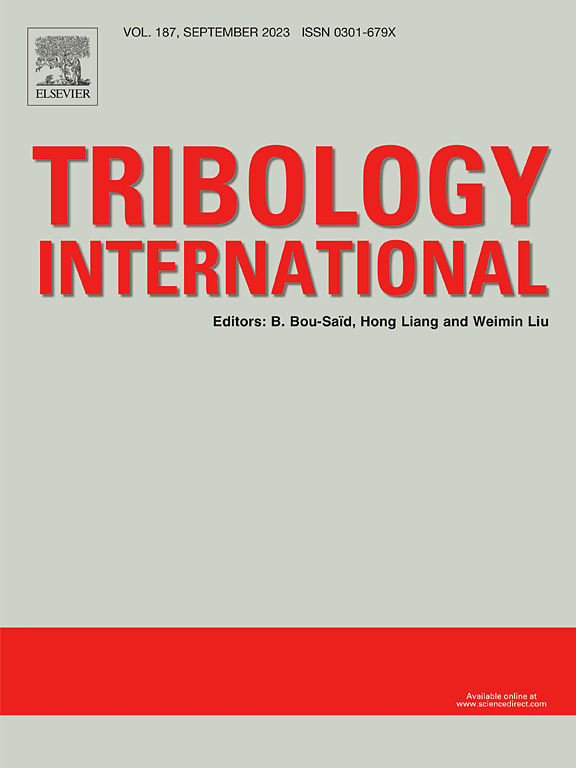Efficient solution method for the Reynolds equation with Herschel–Bulkley fluids
IF 6.1
1区 工程技术
Q1 ENGINEERING, MECHANICAL
引用次数: 0
Abstract
Thin film lubrication problems frequently involve the use of lubricants with non-Newtonian characteristics, and a relatively simple viscosity model that can describe several non-Newtonian fluids is the Herschel–Bulkley relation. This relation can model solid-like properties of a lubricant at low shear stress using a yield stress, while at higher shear stress values shear-thinning or thickening can be included. In literature, this viscosity model has been combined with various governing equations to solve the non-Newtonian thin film problem, resulting in models that range from full 3D CFD simulations, to 1D Reynolds equation based methods. However, something that all of these approaches have in common is that they are either computationally expensive, can only be used for 1D geometries, or use non-exact, regularised versions of the Herschel–Bulkley model for reasons of numerical stability. This paper therefore introduces a method for solving a thin film problem with a non-regularised Herschel–Bulkley lubricant using the 2D generalised Reynolds equation, and this approach is shown to be fast without compromising on accuracy. The increased speed will allow the model to be used more efficiently in complex simulations or design optimisation scenarios.
求助全文
约1分钟内获得全文
求助全文
来源期刊

Tribology International
工程技术-工程:机械
CiteScore
10.10
自引率
16.10%
发文量
627
审稿时长
35 days
期刊介绍:
Tribology is the science of rubbing surfaces and contributes to every facet of our everyday life, from live cell friction to engine lubrication and seismology. As such tribology is truly multidisciplinary and this extraordinary breadth of scientific interest is reflected in the scope of Tribology International.
Tribology International seeks to publish original research papers of the highest scientific quality to provide an archival resource for scientists from all backgrounds. Written contributions are invited reporting experimental and modelling studies both in established areas of tribology and emerging fields. Scientific topics include the physics or chemistry of tribo-surfaces, bio-tribology, surface engineering and materials, contact mechanics, nano-tribology, lubricants and hydrodynamic lubrication.
 求助内容:
求助内容: 应助结果提醒方式:
应助结果提醒方式:


